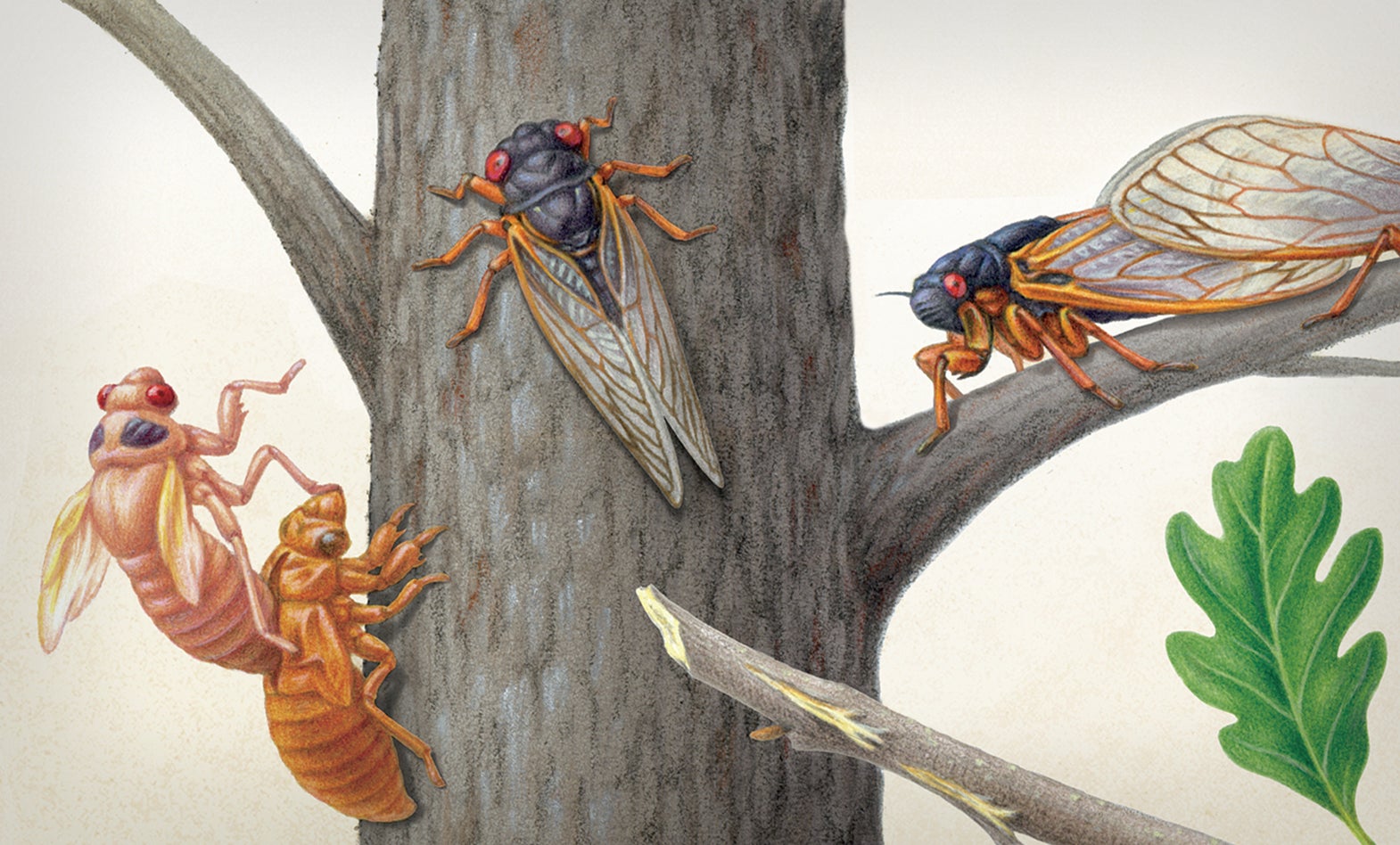“Sit back and be in awe at the spectacle,” John Cooley, a cicada expert at the University of Connecticut, says to the Guardian.
“Then think about where you will be in 13 or 17 years. It’s a time for introspection.”
Up to a Trillion Cicadas Could Emerge in the U.S. Later This Spring
Two specific broods will appear together for the first time since 1803
After years of living underground, two broods of cicadas will emerge later this spring in parts of the Southeast and Midwest. The total number of cicadas could reach a trillion, according to the University of Connecticut.
While the large-eyed, noisy herbivores are a bit of a nuisance to some people, entomologists are excited for this unusual event.
- The two broods are periodical, meaning they only come aboveground once every 13 or 17 years.
- Brood XIII, or the Northern Illinois Brood, surfaces every 17 years.
- Brood XIX (the Great Southern Brood), which appears every 13 years, will join this spring.
While the large-eyed, noisy herbivores are a bit of a nuisance to some people, entomologists are excited for this unusual event.
“For the public, it’s going to be a really special experience.”
“It’s magical, and that’s part of their name,” Tamra Reall, an entomologist at the University of Missouri, says to ABC News’ Andy Fies and Julia Jacobo.
“It’s magical, and that’s part of their name,” Tamra Reall, an entomologist at the University of Missouri, says to ABC News’ Andy Fies and Julia Jacobo.
“Their genus name is magicada, and it’s because it’s a magical experience.”
Shaped like small candy bars with transparent wings, cicadas make up more than 3,000 species. Females typically lay eggs in tree branches, and after a few months the youngsters hatch and burrow underground. They develop while feeding on liquids from tree roots and resurface once they’ve matured to lay their own eggs. They tunnel from underground using their forelegs, molt after they emerge and then start searching for a mate, writes the New York Times’ Aimee Ortiz.
Males produce the trademark cicada buzz using membranes on their abdomens. The males make mating calls that females respond to by flicking their wings.
Males produce the trademark cicada buzz using membranes on their abdomens. The males make mating calls that females respond to by flicking their wings.
The cicadas should start appearing later in April, according to ABC News. The Great Southern Brood may cover the largest geographic area of any periodical brood—Brood XIX insects appear in Maryland, Virginia, Kentucky, Tennessee, North Carolina, South Carolina, Georgia, Alabama, Mississippi, Louisiana, Arkansas, Oklahoma, Missouri, Illinois and Indiana, per the University of Connecticut. Brood XIII appears around Iowa, Illinois, Indiana and Wisconsin.
While annual cicadas appear every year, periodical broods only emerge in certain years and wait until the soil temperature reaches 65 degrees Fahrenheit, per National Geographic.
While annual cicadas appear every year, periodical broods only emerge in certain years and wait until the soil temperature reaches 65 degrees Fahrenheit, per National Geographic.
- Scientists have theorized that by coming out in large numbers all at once, it helps ensure that enough of them will survive predation to spawn offspring, writes the Guardian.
- Researchers also think they know how cicadas know when another year has passed—the tree sap they drink gets richer in amino acids once a year when the tree blossoms, writes Scientific American’s Meghan Bartels.
Cicadas aren’t the most resilient individuals. They have many potential predators and not much in the way of defense mechanisms—they don't bite or sting and aren’t poisonous, per ABC News.
“They feed everybody, including fish, snakes, small mammals, large mammals, birds,” Dana tells the publication.
“I like to think of this event as potentially buffering some of the losses that we’ve seen in our wildlife [populations].”
Cicadas are “not great fliers and even worse landers,” ending up in places they can get squished by cars and people, Floyd W. Shockley, an entomologist at the National Museum of Natural History, says to the New York Times.
The ground will be covered with young cicadas and discarded exoskeletons, and trees and plants will be filled with adults, Evan Lampert, an insect ecologist at the University of North Georgia, tells ABC News. The noise the cicadas make could be louder than a plane in some places, according to the New York Times.
The ground will be covered with young cicadas and discarded exoskeletons, and trees and plants will be filled with adults, Evan Lampert, an insect ecologist at the University of North Georgia, tells ABC News. The noise the cicadas make could be louder than a plane in some places, according to the New York Times.
___________________________________________________________________________________
:focal(2567x1711:2568x1712)/https://tf-cmsv2-smithsonianmag-media.s3.amazonaws.com/filer_public/06/d6/06d6edc9-cdfa-4bb9-8caf-afb524852213/gettyimages-1321221953.jpg)

.jpg)









No comments:
Post a Comment